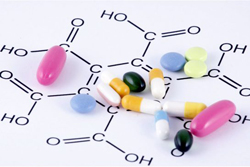The chemical imbalance theory has fallen in status from bedrock scientific principle to mere marketing device in the minds of many researchers.
The Toronto Star – October 18, 2013
By Joseph Hall
A broken heart and a blue, bedevilled brain.
They’ve been twinned, metaphorically, in poetry and song for millennia.
Over the past 50 years, however, science and medicine have been contemplating the organs and their maladies on a purely biological basis.
In particular, an evolving half-century of medical wisdom came to this conclusion:
Just as coronary diseases — or those of the liver, or kidneys for that matter — were plainly the result of physiological disruptions, so too were the mental illnesses of the brain.
Now, neuroscience would attribute such things as depression and psychosis to “chemical imbalances” — specifically to disruptions in the neurotransmitters that allow the brain’s billions upon billions of grey matter cells to speak to one another.
And so mental illnesses became normalized and destigmatized.
And so their treatments, to a huge extent, came off of the couch, out of the asylums and onto pharmacy counters.
And so a $70-billion drug market grew to feed tens of millions worldwide with daily doses of magic bullets — pills that could bring their brain chemistry back into balance.
Trouble is, in the minds of many neuroscientists today, that chemical imbalance theory has turned out to be a myth, with little more scientific or medicinal substance than poetry or song.
And the pills are now largely recognized by a multitude of experts, as well as some of the pharmaceutical companies that make them, as concoctions of magical thinking.
“It’s certainly been blown up inside the profession. No insiders believe in these (neurotransmitter imbalance) theories anymore,” says Edward Shorter, a medical historian at the University of Toronto.
“That’s true of thousands and thousands of researchers. But somehow that news has not filtered through to the public as a whole,” says Shorter, who has written numerous books on psychiatric practices.
Some top neuroscientists argue that this is nonsense, that neurotransmitters are a critical and obvious aspect of psychiatric research and therapy.
A key proof of this, they say, is that drugs targeting these brain chemicals have worked wonders — miracles even — in controlling mental and neurological ailments such as schizophrenia and Parkinson’s disease.
But if this is so, asks psychotherapist and author Gary Greenberg, why have many drug manufacturers jettisoned the neurotransmitter theory?
Why are they now shuttering or shrinking their massive, psychiatric research labs, where they’d sought new compounds to follow in the blockbuster footsteps of antidepressants like Prozac, Paxil and Zoloft?
“The brain is turning out to be a moving target,” says Greenberg, who wrote a controversial article on the subject for The New Yorker last month.
“And consequently drug companies, which are profit-motivated, are not seeing it (neurotransmitter imbalances) as a fruitful avenue,” he says.
Neurotransmitters such as dopamine, serotonin and norepinephrine are the brain’s chemical ferrymen, allowing electrical impulses to cross from one synapse to another in the mesmerizing cascades of neuronal connections that render thought, emotions, movement initiation and a host of other brain activities.
Imbalances in these communicating chemicals, it was held, were the key cause of the major psychiatric disorders. And targeting these imbalances with drugs became the obvious strategy to treat mental illnesses.
In schizophrenia, for example, it was the dopamine system that was out of whack, while serotonin shortages triggered depression.
But Shorter says the past several years have seen the chemical imbalance theory fall in status from bedrock scientific principle to mere marketing device in the minds of many researchers.
“The view among neuroscientists is that this emphasis on neurotransmitters as the cause of mental illness is more of a (drug sales) concept than a scientific concept,” he says.
“It helps drug companies sell drugs.”
It does so, Shorter says, by giving physicians an organic medical justification — akin to high cholesterol in cardiovascular diseases or blood sugar levels in diabetes — to prescribe the drugs, while offering patients a comforting rational for taking them.
“But in fact nobody knows what the cause of these mental illnesses (are),” Shorter says. Read rest of the article here: http://www.thestar.com/news/insight/2013/10/18/mental_illness_is_chemical_imbalance_theory_a_myth.html



